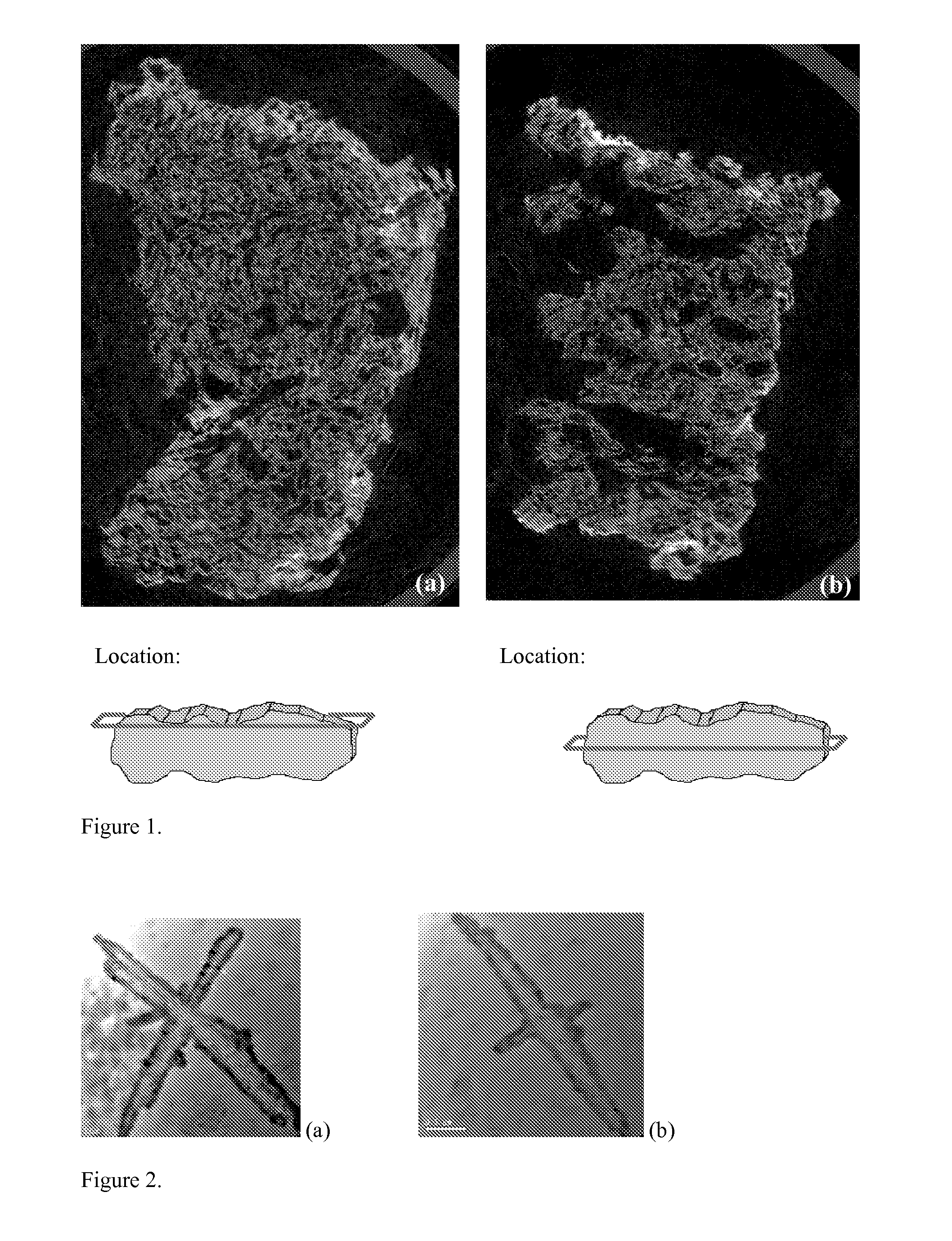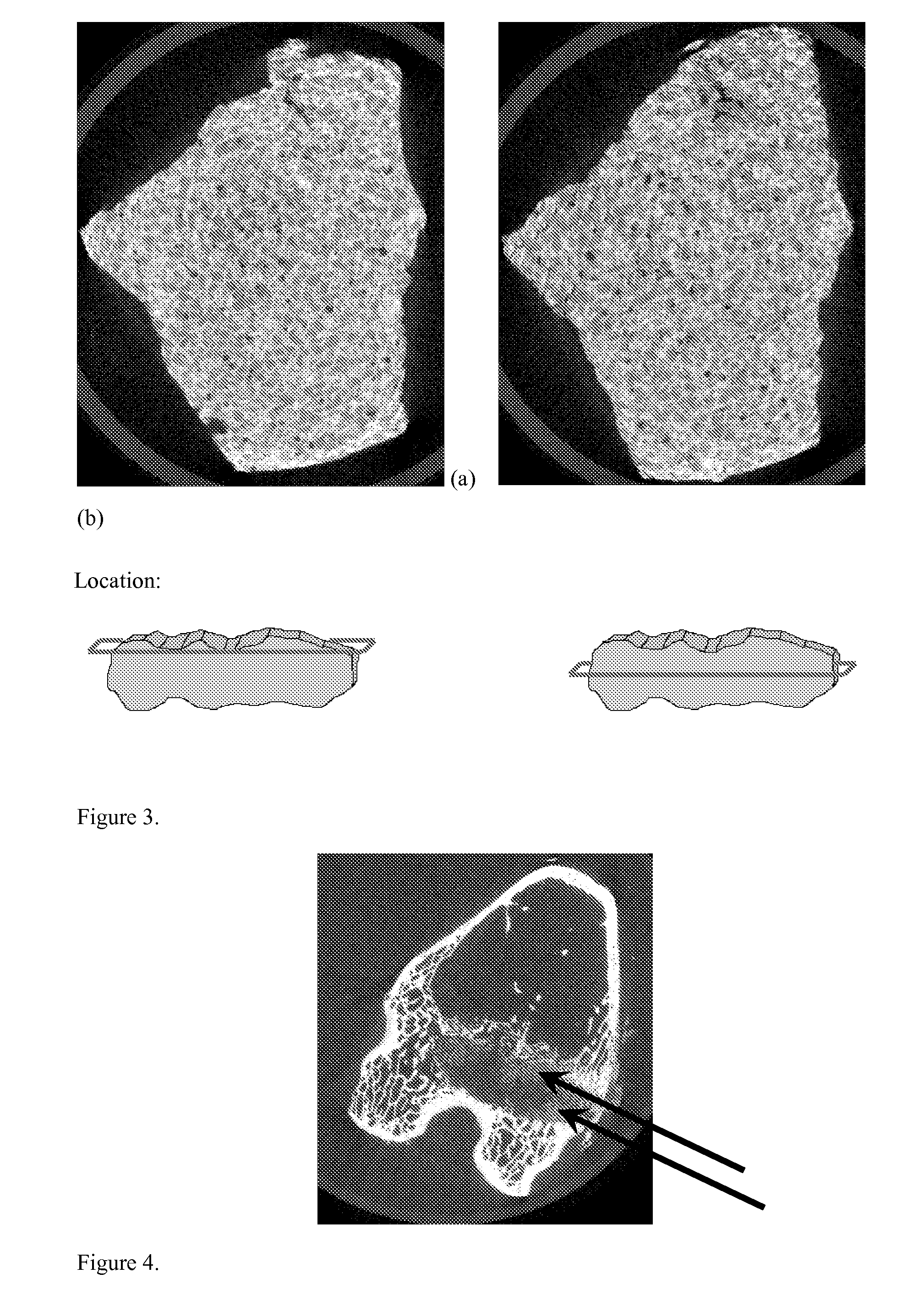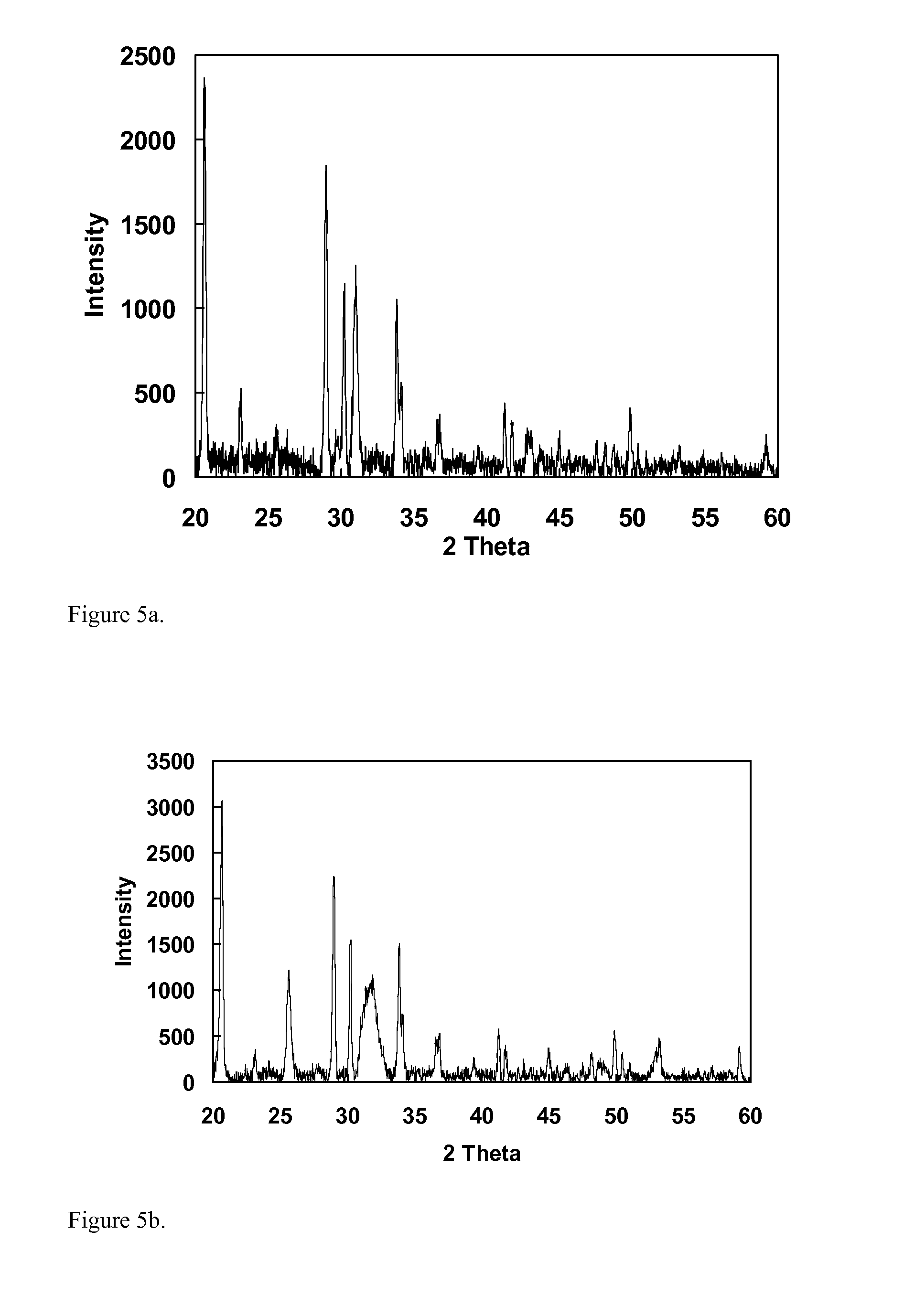Biomimetic Hydroxyapatite Composite Materials and Methods for the Preparation Thereof
a technology of hydroxyapatite and composite materials, which is applied in the field of biomimetic hydroxyapatite composite materials and methods for the preparation thereof, can solve the problems of low yield or long reaction time, and is not practical for manufacturing implants
- Summary
- Abstract
- Description
- Claims
- Application Information
AI Technical Summary
Benefits of technology
Problems solved by technology
Method used
Image
Examples
example 1
Solution Preparation
[0079]Calcium acetate hydrate (99% Acros Organics, Belgium, CAS # 114460-21-8) and potassium orthophosphate hydrate (Acros Organics, Belgium, CAS# 27176-10-9) were used as reactants for the synthesis of hydroxyapatite. First, a 1.0 molal calcium acetate hydrate solution was made using distilled, deionized water (“calcium solution”). Then, a 0.6 molal solution of potassium orthophosphate hydrate was made using distilled, deionized water. The solution was divided in half (“phosphate solutions”) and acetic acid was added to one solution until the pH reached 7.4 (“neutralized solution”). The volume of acetic acid depends on total solution volume. For example, a 500 mL solution needs about 23 mL of glacial acetic acid.
example 2
Surface Mineralization of an Intact Fiber Matrix
[0080]Demineralized bone matrix (0.7416 g) in the form of a fiber mat (Grafton Matrix, Osteotech, Inc., Eatontown, N.J.) was soaked in 10 mL of the calcium solution until hydrated (about 1 hour). Phosphate solutions were added as follows: 8.5 mL of the un-neutralized solution was added, followed by 1.5 mL of the neutralized solution. All 4 components were then covered and vortexed until a thin white slurry results (about 2 minutes). The fiber mat was then extracted and washed in distilled, deionized water 3 times or until the resulting solution remained clear when agitated. This action should dislodge any hydroxyapatite not precipitated on the surface. The mat was then put in a 45° C. oven for a period of about 3 hours, then frozen and lyophilized.
[0081]Samples for XRD were prepared by drying residual powder from the washes and placing the powder on amorphous double sided tape. The samples were then introduced into the diffractometer. ...
example 3
Surface Mineralization of a Dissociated Fiber Matrix
[0085]Demineralized bone matrix (0.7416 g) (Grafton Matrix, Osteotech, Inc., Eatontown, N.J.) was soaked in 10 mL of the calcium solution until hydrated. The matrix was then broken apart to create a fibrous slurry. Phosphate solutions were added as follows: 8.5 mL of the un-neutralized solution was added, followed by 1.5 mL of the neutralized solution. All 4 components were then covered and vortexed until a thin white slurry results (about 2 minutes). The entire solution was extracted and centrifuged for 5 minutes at 3000 rpm, 4 G. The remaining liquid was poured off. The mineralized fibers were then transferred to a mold and dried in a 45° C. oven for 3 hours, then frozen and lyophilized.
PUM
| Property | Measurement | Unit |
|---|---|---|
| Temperature | aaaaa | aaaaa |
| Temperature | aaaaa | aaaaa |
| Particle size | aaaaa | aaaaa |
Abstract
Description
Claims
Application Information
 Login to View More
Login to View More - R&D
- Intellectual Property
- Life Sciences
- Materials
- Tech Scout
- Unparalleled Data Quality
- Higher Quality Content
- 60% Fewer Hallucinations
Browse by: Latest US Patents, China's latest patents, Technical Efficacy Thesaurus, Application Domain, Technology Topic, Popular Technical Reports.
© 2025 PatSnap. All rights reserved.Legal|Privacy policy|Modern Slavery Act Transparency Statement|Sitemap|About US| Contact US: help@patsnap.com



